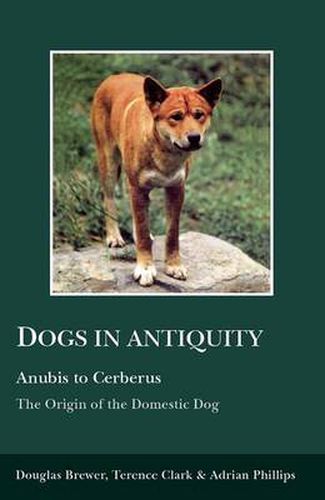Readings Newsletter
Become a Readings Member to make your shopping experience even easier.
Sign in or sign up for free!
You’re not far away from qualifying for FREE standard shipping within Australia
You’ve qualified for FREE standard shipping within Australia
The cart is loading…






Using new genetic research and the material from excavations, Anubis to Cerberus first examines the archaeological evidence for the origins of the dog and the process of domestication in prehistory. In historic times numerous tomb-paintings and artifacts from Egypt and the Middle East depict dogs hunting, herding, guarding and simple as pets. Dogs represented gods in Egypt, Mesopotamia and Greece, and their archaeological remains have been recovered for their cult centers. These records show the development of specialized breeds during the first great civilizations. In the Graeco-Roman period a new dimension to the story is added: technical literature about rearing, training and special uses of the dog.Lavishly illustrated, this book combines the latest scientific material with a cultural history to tell the developing story of the inter-relationship between man and dog from its origin in remote antiquity to that which we know today. It will be invaluable for archaeologists wishing to identify dogs and canid remains, for zoologists tracing the history of the species and fascinating for anyone who has a serious interest in the history of the dog and the origins of modern breeds.
$9.00 standard shipping within Australia
FREE standard shipping within Australia for orders over $100.00
Express & International shipping calculated at checkout
Using new genetic research and the material from excavations, Anubis to Cerberus first examines the archaeological evidence for the origins of the dog and the process of domestication in prehistory. In historic times numerous tomb-paintings and artifacts from Egypt and the Middle East depict dogs hunting, herding, guarding and simple as pets. Dogs represented gods in Egypt, Mesopotamia and Greece, and their archaeological remains have been recovered for their cult centers. These records show the development of specialized breeds during the first great civilizations. In the Graeco-Roman period a new dimension to the story is added: technical literature about rearing, training and special uses of the dog.Lavishly illustrated, this book combines the latest scientific material with a cultural history to tell the developing story of the inter-relationship between man and dog from its origin in remote antiquity to that which we know today. It will be invaluable for archaeologists wishing to identify dogs and canid remains, for zoologists tracing the history of the species and fascinating for anyone who has a serious interest in the history of the dog and the origins of modern breeds.